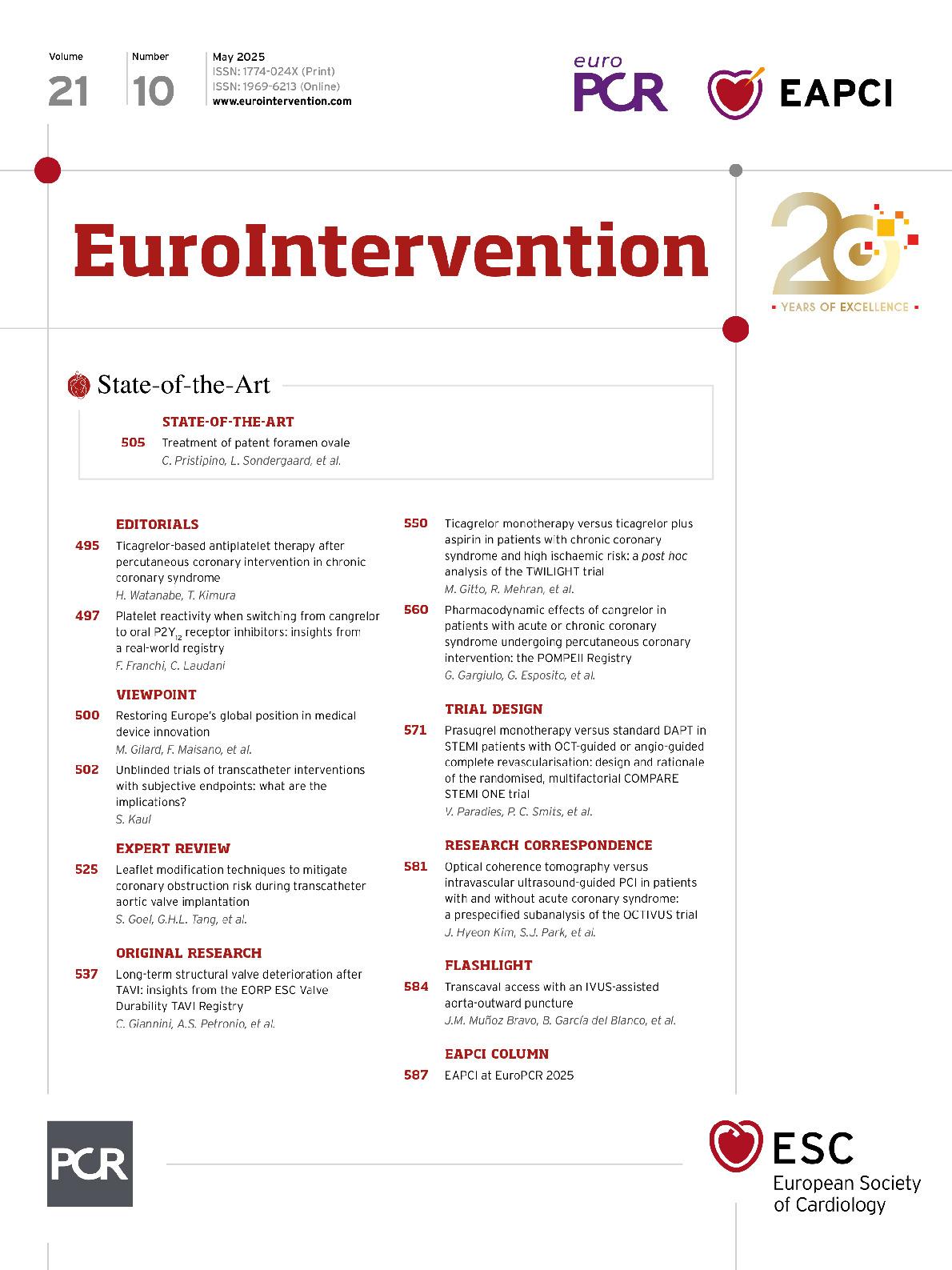Transfemoral access is the preferred choice for most transcatheter aortic valve implantation (TAVI) procedures. However, there are patient-specific femoral features that can limit its use. For this reason, alternative approaches, such as transcaval access, have been explored to overcome these limitations. In this procedure, an introducer is placed in the femoral vein and guided into the inferior vena cava (IVC). A fistula is then created between the IVC and the aorta using a guidewire-electrification technique. Finally, the fistula is closed with an Amplatzer occluder (Abbott). One factor that can make this approach difficult is the descending aorta calcium burden (since transcatheter electrosurgery techniques are more challenging through calcified areas and could increase the risk of vessel damage)1.
We treated a 78-year-old male with a history of chronic obstructive pulmonary disease (COPD), severe peripheral vasculopathy with bilateral bypasses in inferior extremities, previous myocardial infarction, and severe aortic stenosis with high operative risk and a challenging anatomy that hindered alternative access.
A preprocedural computed tomography (CT) scan showed diffuse and severely calcified atheromatosis in the descending aorta. Due to severe aortic wall calcifications...
Sign up for free!
Join us for free and access thousands of articles from EuroIntervention, as well as presentations, videos, cases from PCRonline.com

